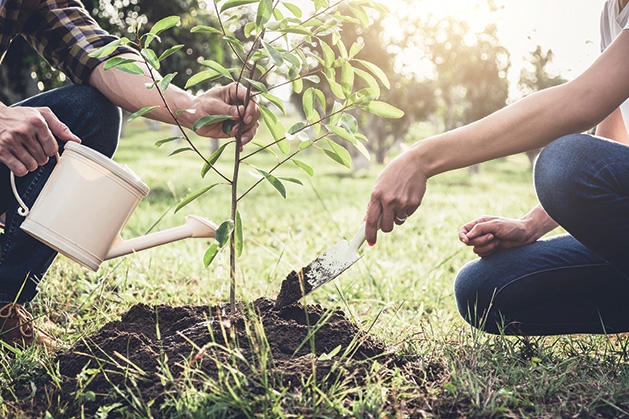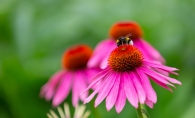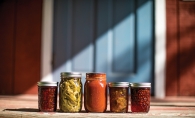
Planting season has arrived, and it’s time to dig in and make plans. This year, think about creating some edible landscaping—yard to table. With advice from Fair’s Floral and Nursery and the Minnesota Landscape Arboretum, even the most novice gardeners can take a shot at growing their own fruit-bearing trees/bushes.
Make your apple pie as local as it can possibly be by planting an apple tree in your yard. Fair’s co-owner Phil Phenow recommends planting trees as soon as the ground is dry enough to start digging.
When planting trees, it is important to note that it may take a while for the tree to start flowering, Phenow says. Depending on the size and type of tree, it may take up to eight years for it to bear fruit. Keep this in mind when going through your planning process. Patience is a virtue—even for gardeners!
You may have heard that having two of the same fruit tree is better than one, and Phenow agrees. Because of the importance of pollination in the process of growing a fruit, our little pollinator friends have an easier time getting the pollen required for their job when the right trees are planted within a close proximity.
If your yard allows it, plant two of the trees or shrubs of the fruit you’re trying to produce. This will increase your chances of having a larger selection once your fruit tree or shrub begins to flower, Phenow says.
Not all fruit is fit to grow here. In Minnesota, fruit has to withstand brutal winters and sometimes scorching summers. What is worth planting in this neck of the woods? Fruit trees like apples and pears do well in Minnesota. If a yard doesn’t allow the amount of space for a tree—or two for more produce—then berries, such as blueberries, raspberries and strawberries also do well in Minnesota, Phenow says.
As far as which fruits fare best in this state's unpredictable climate, Alan Branhagen, director of operations at the Minnesota Landscape Arboretum, suggests apples and plums for the first-time grower. “Plums are the third easiest fruit to grow in Minnesota,” he says, with cherries being a close second behind apples. The tending to fruit-bearing trees is relatively simple. “Fruit trees like soil that’s well-drained,” Branhagen says. “They need full sun and need about an inch of water a week.”
While it might seem like a whimsical idea to plant an apple seed and grow a mammoth tree in the yard, Branhagen urges that this isn’t exactly how it works. “Usually, they’re on dwarfed rootstock,” he explains, which is a tree that’s been sectioned and already grown slightly in order to provide a head start for growers. These can be found at most nurseries.
Branhagen says that crabapple trees are great pollinators for apple trees. “There are normally so many of them around, you don’t need to worry about planting one of your own,” he says. While apples can thrive fine with a crabapple pollinator, plum trees need a couple of varieties of pollinators in order to successfully produce fruit.
With so many options for Minnesotans to choose from in the spring months, many use fruit trees as ornamental add-ons to their gardens. Branhagen does give one warning to those tempted to pick their fruit: don’t. “A root tree typically won’t bloom until the second or third year,” he says. No matter how tempting it may be, picking fruit before its prime can inhibit it from growing in the future. Harvesting a bit of patience for those first years is the best bet.
If you’ve seen fruit trees or bushes blossom, you know that the flowers in springtime are gorgeous. While one of the most obvious benefits of having fruit trees or bushes at home is the tastiest one, these bountiful bloomers can also visually elevate your current landscape design.
Fair’s Floral and Nursery
9340 Fair Way, Maple Grove
763.425.4212
Facebook: Fair’s Nursery









